1. Non-Player Character (NPC) Behavior
AI enables game NPCs to exhibit more human-like intelligence and reactivity. Modern NPCs can learn from player actions, change their strategies, and even show realistic emotions or dialogue patterns. This adaptive behavior makes game worlds feel more alive and immersive, as NPCs no longer follow rigid scripts but respond dynamically. Tech-savvy players appreciate that under the hood, techniques like machine learning and behavioral trees allow NPCs to plan and react in real-time. The result is richer storytelling and gameplay, where NPCs can surprise players with unscripted interactions and a sense of genuine presence.
-behavior-0.jpg)
Surveys confirm that players value smarter NPCs. In 2024, a gaming industry report found that 99% of surveyed players believed AI-enhanced NPCs would improve gameplay, and 81% said they would even pay more for games featuring such intelligent NPC behavior. This enthusiasm is mirrored by developers: nearly three-quarters of game studios polled expressed excitement about adding AI-driven NPCs into their games. These data points underscore a real-world trend toward AI-powered NPCs becoming a selling point for modern games.
2. Procedural Content Generation
AI-driven procedural content generation (PCG) allows games to create levels, maps, items, and puzzles on the fly rather than manually designing every element. This means each playthrough can be unique – one example is AI algorithms generating endless terrain or dungeon layouts that adapt to the player’s progress. For developers, AI PCG tools can analyze design parameters and then produce vast amounts of content (like new quests or land formations) much faster than humans alone. The benefit to players is a game world that feels virtually infinite and always fresh, greatly enhancing replayability. In a techno-optimistic view, AI is becoming a collaborator in game design, handling the heavy lifting of content creation so designers can fine-tune experiences.
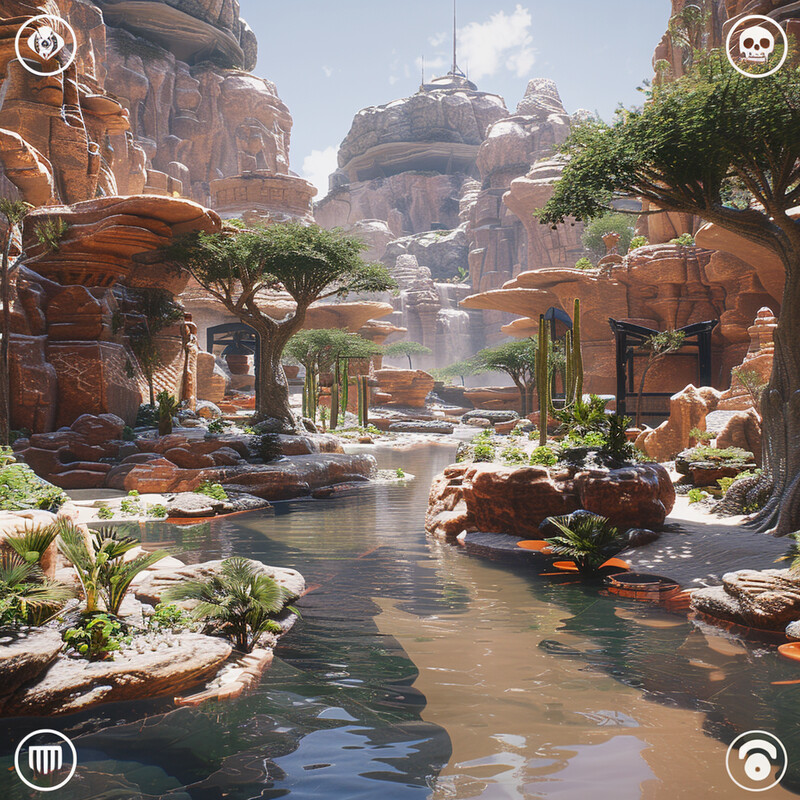
Game studios are rapidly adopting AI for world and level generation. A 2024 Unity Technologies survey reported that 56% of studios already use AI in “world-building” tasks – essentially procedural generation of game environments. Within those studios, a further 64% specifically employ AI tools to create dynamic content like landscapes and in-game architecture populated with AI-crafted NPCs. This real-world usage shows that more than half of developers now lean on AI to automatically produce rich game worlds, allowing them to deliver larger and more varied environments to players without proportional increases in development time.
3. Dynamic Difficulty Adjustment
Dynamic Difficulty Adjustment (DDA) uses AI to tailor a game’s challenge to the player’s skill in real time. Instead of choosing a static “easy” or “hard” mode, the game’s AI monitors player performance (successes, failures, reaction time, etc.) and seamlessly tweaks the difficulty. If a player is struggling, AI can slightly tone down enemy strength or give subtle assists; if they’re excelling, it might ramp up the challenge to keep things engaging. This creates a smoother difficulty curve and a personalized experience – the goal is to maintain the “sweet spot” where the game is neither too frustrating nor too boring. Tech-savvy gamers recognize this as a form of real-time feedback loop, often powered by reinforcement learning or predictive models that guess when to adjust the game’s parameters.
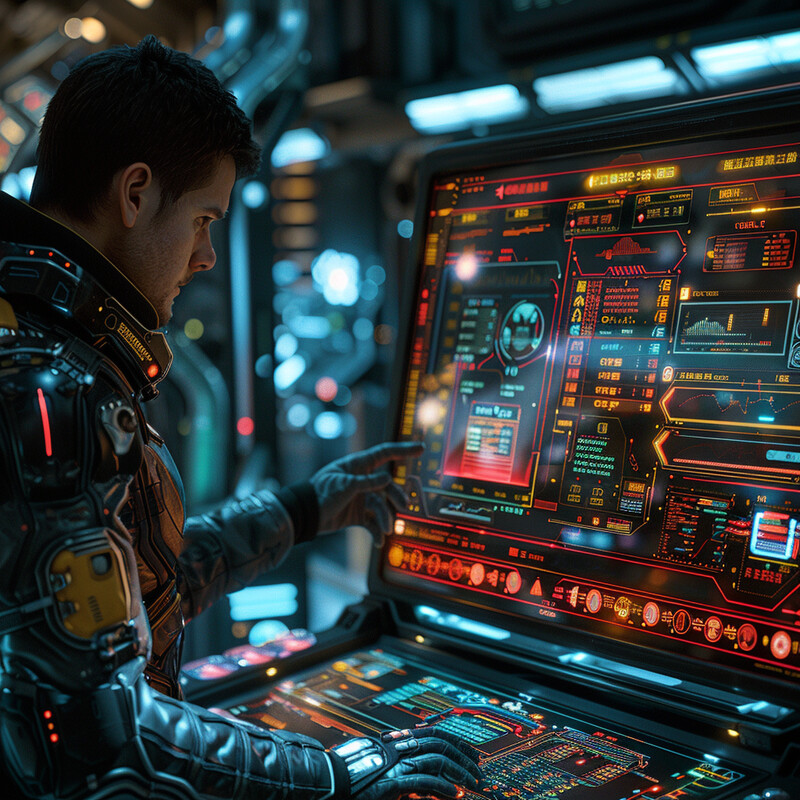
There’s strong evidence that adaptive difficulty keeps players engaged longer. A 2024 study in a popular free-to-play game demonstrated that dynamically lowering the difficulty for struggling players boosted both their immediate engagement and long-term . In that large randomized trial, players given an easier difficulty when needed ended up playing more and, surprisingly, spending more money in-game. Specifically, the experiment showed that by making the game more accommodating (thus reducing early frustration), the developer saw a significant increase in player retention and an eventual lift in revenue from those players as well. This real-world result illustrates how AI-adjusted difficulty can improve both player satisfaction and a game’s commercial success.
4. Realistic Graphics Rendering
AI is pushing video game graphics closer to photorealism. One key application is in rendering techniques like upscaling and lighting: for example, deep learning super sampling (DLSS) uses neural networks to render high-resolution visuals more efficiently, and AI-driven ray tracing enhancements simulate realistic lighting and reflections in real time. These AI algorithms can fill in detail or improve performance by learning how to produce sharp images without taxing the hardware as much. The benefit to gamers is richer, more lifelike visuals – realistic shadows, reflections in water or glass, and finely detailed textures – even on machines that might otherwise struggle. The tone among developers is optimistic: AI promises not only prettier games but also the possibility of automating art tasks like texture creation or animation smoothing, freeing artists to focus on creative aspects.

AI-based graphics tech has seen rapid adoption in the gaming industry. By early 2025, Nvidia’s AI-powered upscaling and lighting system (DLSS) was supported in 769 games and applications, a number that vastly outpaces competing non-AI solutions. This means hundreds of games now routinely use AI to boost frame rates and image quality – for instance, rendering a game at lower resolution then using AI to upscale it seamlessly to high-res. The widespread integration of DLSS (found in popular titles from indie games to AAA blockbusters) highlights how AI has become an industry-standard component of achieving high-fidelity graphics. In practice, gamers with AI-capable graphics cards overwhelmingly use these features; Nvidia even noted that over 80% of its RTX GPU owners enable AI upscaling in their games, reflecting how integral AI-enhanced rendering has become for visual quality and performance.
5. Voice Interaction
AI-powered voice interaction allows players to control games or communicate using natural language. This can range from voice commands (e.g. telling an ally character what to do via microphone) to full-on conversational interfaces where a player talks to an AI character. Advances in speech recognition (thanks to AI models trained on vast datasets) mean games can accurately understand spoken commands even in noisy environments. This makes gameplay more intuitive – instead of navigating menus, a player might simply say “switch to sniper rifle” or ask an NPC a question with their voice. Beyond commands, some games use AI voice tech to generate spoken dialogue on the fly, making NPC conversations more dynamic. The tone around this is optimistic: as smart assistants like Alexa and Siri have become common, gamers are increasingly comfortable talking to devices, and games are the next frontier for that convenience and immersion.

The ecosystem for voice recognition technology has exploded, signaling its readiness for gaming. Industry analysts project the global voice and speech recognition market to reach about $26.8 billion by 2025, up from only a few billion just a few years prior. This rapid growth is driven by improvements in AI accuracy – current speech-to-text engines can achieve near human-level recognition rates (over 90% accuracy for many languages). In gaming, we see this trend manifest in features like voice-controlled game assistants and VR games that understand player spoken instructions. The market figure illustrates a broader trend: voice interfaces (powered by AI) are becoming mainstream, and game developers are tapping into these mature technologies to enable hands-free, immersive player experiences.
6. Enhanced Player Matching
AI is refining how players are matched together in online multiplayer games. Traditional matchmaking used basic metrics (like rank or win-loss records); AI allows for a more nuanced approach by analyzing many aspects of a player’s style and skill. The goal is to create fair and fun matches – for example, pairing you with teammates and opponents who will provide a good challenge without being overwhelming. AI-driven matchmaking might consider reaction times, teamwork behaviors, or even toxic chat indicators to balance teams. The benefit is a better experience: matches that feel neither like a stomp nor an unfair loss, reducing the chance players get discouraged. From a technical perspective, this often involves machine learning models predicting the outcome of potential matchups and selecting combinations that yield roughly 50/50 win probabilities for each side, keeping games competitive.
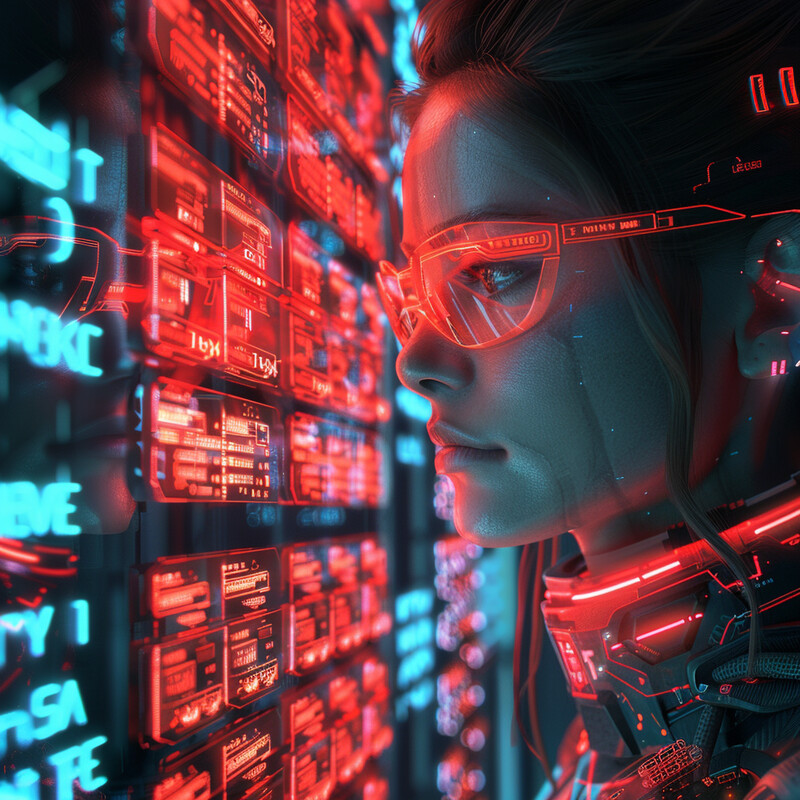
Keeping matches fair isn’t just idealistic – it has measurable impacts on player retention. A 2024 study of a competitive online game showed that when matchmaking was balanced (low skill gap between players), players were significantly less likely to quit the game, whereas larger skill mismatches led to higher churn rates. In practical terms, the research found that even a small increase in the skill disparity of a match (e.g. pairing novices against much better players) would cause a noticeable uptick in players dropping out afterward. Game companies like Activision have reported similar findings: internal A/B tests revealed that turning off their skill-based matchmaking caused “more quitting, less playing” as games became too lopsided. These real-world data underscore that AI-enhanced matchmaking isn’t just about fairness in principle – it tangibly keeps players engaged and coming back for more balanced competition.
7. Predictive Analytics
AI-driven predictive analytics in gaming involves crunching player data to forecast future behavior or preferences. Game companies deploy machine learning models on telemetry data (every in-game action, purchase, time spent, etc.) to predict things like which players might quit soon (churn), what content a player will enjoy, or when a player might make an in-game purchase. By anticipating these events, developers and live-ops teams can intervene – for example, offering a tutorial or reward to a player likely to churn, or recommending items a player is statistically inclined to buy. For players, this means a more personalized and responsive game: the game might adjust or offer content that “reads your mind,” which in theory makes the experience more engaging. The tone around this is optimistic but practical: while there are ethical considerations (privacy and not being too manipulative), predictive analytics backed by AI is largely seen as a way to tune games to player needs and keep communities thriving.

Predictive analytics is already proving its worth in live games. In 2023, one case study on a mobile game implemented an AI churn-prediction system that could identify players at high risk of quitting with over 83% accuracy. By acting on those predictions – for instance, the game automatically reduced ad frequency for at-risk players to improve their experience – the developers saw a 5.7% increase in player retention (more players kept playing through later stages) and a 14.4% increase in revenue from those players. This real-world example shows how AI-driven analytics can directly impact a game’s success: by predicting behavior and personalizing the response in real time, the game both satisfied players and improved its financial performance.
8. Automated Game Testing
AI is revolutionizing quality assurance (QA) in games by automating game testing. Traditionally, armies of testers would play through games trying to find bugs or exploits – a labor-intensive and costly process. Now, AI “bots” can play games non-stop, systematically covering more ground than human testers. Techniques like reinforcement learning train AI agents to navigate levels, try various actions, and even intentionally stress the game (for example, performing thousands of random actions quickly to see if something breaks). AI can also intelligently generate test cases – it might vary every possible combination of character abilities in a specific level to find a rare bug. This not only speeds up development (since AI can test 24/7) but also catches obscure issues that humans might miss. Developers are optimistic that AI testing will result in more polished launches and fewer glitches for players, as the AI can simulate user behavior at scale before release.
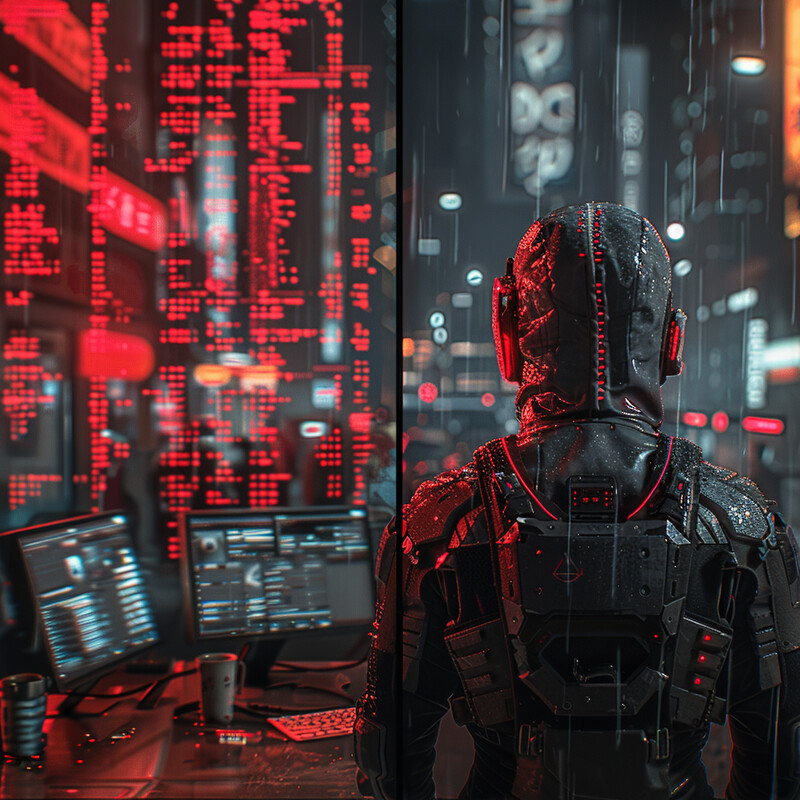
Game companies report dramatic efficiency gains from AI in QA. According to industry research by Newzoo, implementing AI-based testing tools can cut game testing time by up to 50%. In practice, what might have been a month-long manual testing cycle could be shortened to two weeks with AI bots continuously combing through the game. This time savings means games can be released faster and with higher confidence in their stability. Major studios are already integrating these systems: for example, Ubisoft has used an AI agent to traverse Assassin’s Creed game worlds and identify glitches, and mobile developers use AI to test thousands of device configurations virtually. The Newzoo finding – a potential halving of testing time – highlights a real trend in the industry: AI is rapidly augmenting human QA teams, making the testing phase more efficient and thorough than ever.
9. Personalized Gaming Experiences
AI allows games to personalize content for each player, tailoring the experience in ways that were not possible before. This could mean a game’s story adapts to decisions the player has been making (AI as a “dungeon master” shaping the narrative), or dynamically adjusting which quests or challenges appear based on what the player enjoys. AI can analyze a player’s style – perhaps you favor stealth over combat – and then offer more missions that fit that preference. It can also personalize cosmetic content, in-game events, or difficulty (tying in with DDA) to keep you in your ideal zone of engagement. In multiplayer or online platforms, personalization might involve recommending games or modes you’d like, similar to how Netflix or Spotify recommend content. The overall effect is that no two players have the exact same experience, and each gamer gets a version of the game best suited to their tastes and skill. This individual-centric design is increasingly feasible with AI and is greeted with optimism as it can significantly boost player satisfaction and loyalty.
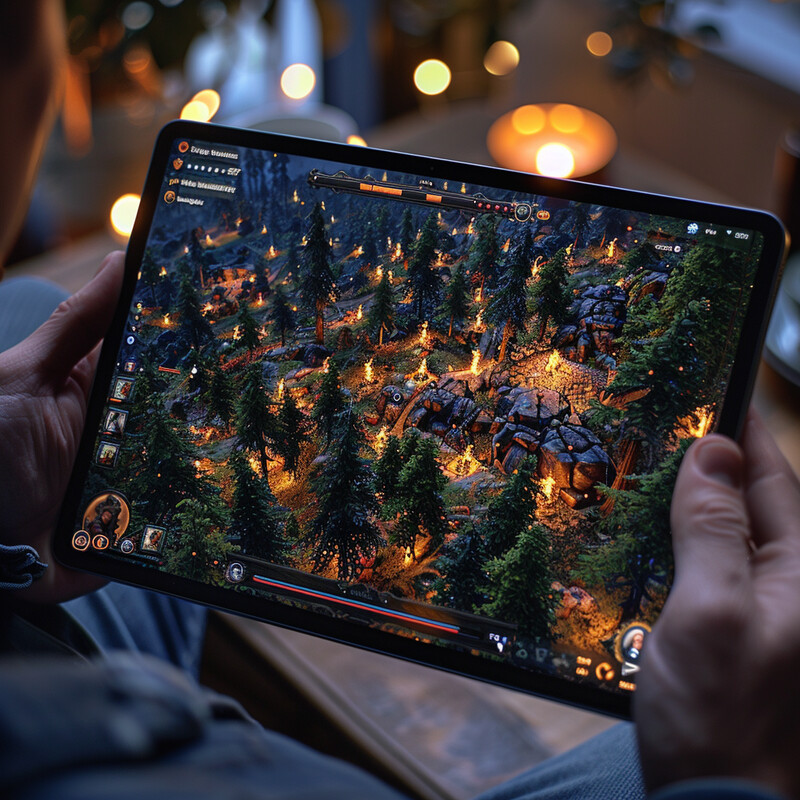
Personalized gaming drives measurable improvements in engagement. In the online gaming (iGaming) sector, operators who implemented AI-driven personalization saw a 26% increase in player engagement for new games, along with a 7% increase in revenue turnover. For example, by personalizing the game lobby for each user – highlighting games and offers that data indicated the player would like – these platforms kept players active much longer and encouraged them to explore more content. Another study by industry group ICE found that 80% of players actively seek more personalized experiences in gaming, validating that the demand is there. The real-world success of personalized game systems (as evidenced by the significant double-digit engagement jump) demonstrates that AI-tailored experiences aren’t just a gimmick – they meaningfully enhance how much players invest their time and money into games.
10. Emotional Recognition
Emotional recognition technology is an emerging frontier where AI interprets the player’s emotions and adapts the game accordingly. Using inputs like a webcam for facial expressions, a microphone for voice tone, or even wearable sensors for heart rate, an AI can gauge whether a player is stressed, scared, happy, or frustrated. Games can use this information to adjust the experience in real time – for instance, a horror game might dial down the intensity if it senses the player is overly frightened, or an educational game might provide encouragement when it detects frustration. This creates a feedback loop between the player’s emotional state and the game’s behavior, making the experience feel more responsive and immersive. It’s a cutting-edge application of affective computing, and while still in early stages, it points toward games that can empathize with players. Developers maintain a hopeful tone that such systems, if used respectfully, could lead to games that help with wellness (by detecting distress) or just provide perfectly tuned excitement.

AI’s ability to read emotions has advanced rapidly. As of 2024, state-of-the-art emotion recognition models can identify human facial emotions with about 96% accuracy, distinguishing up to 7 distinct emotions (like happiness, anger, fear, surprise, etc.) from facial expressions alone. This high accuracy, reported in recent AI trials, means the technology is viable for consumer use – for instance, a camera could fairly reliably tell if a gamer is smiling or frowning. In gaming contexts, early implementations have appeared: the horror game Nevermind used biofeedback to adjust scare levels based on player heart rate, and research prototypes have used webcams to detect player frustration and dynamically adjust game difficulty. The near-human accuracy of emotion-detecting AI suggests that in coming years more games will experiment with reading players’ feelings and responding in real time, making emotional recognition a potential game-changer for interactive entertainment.